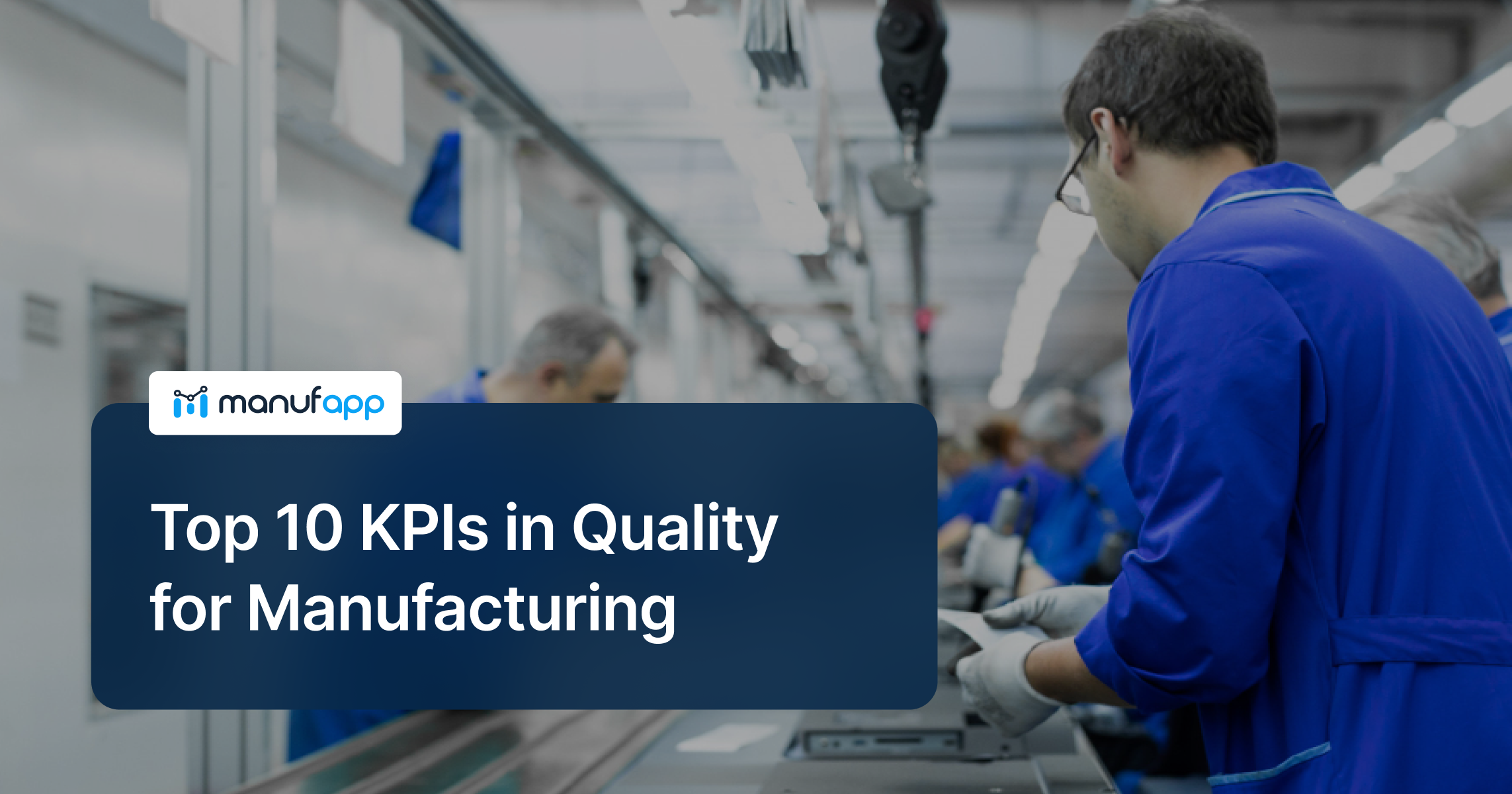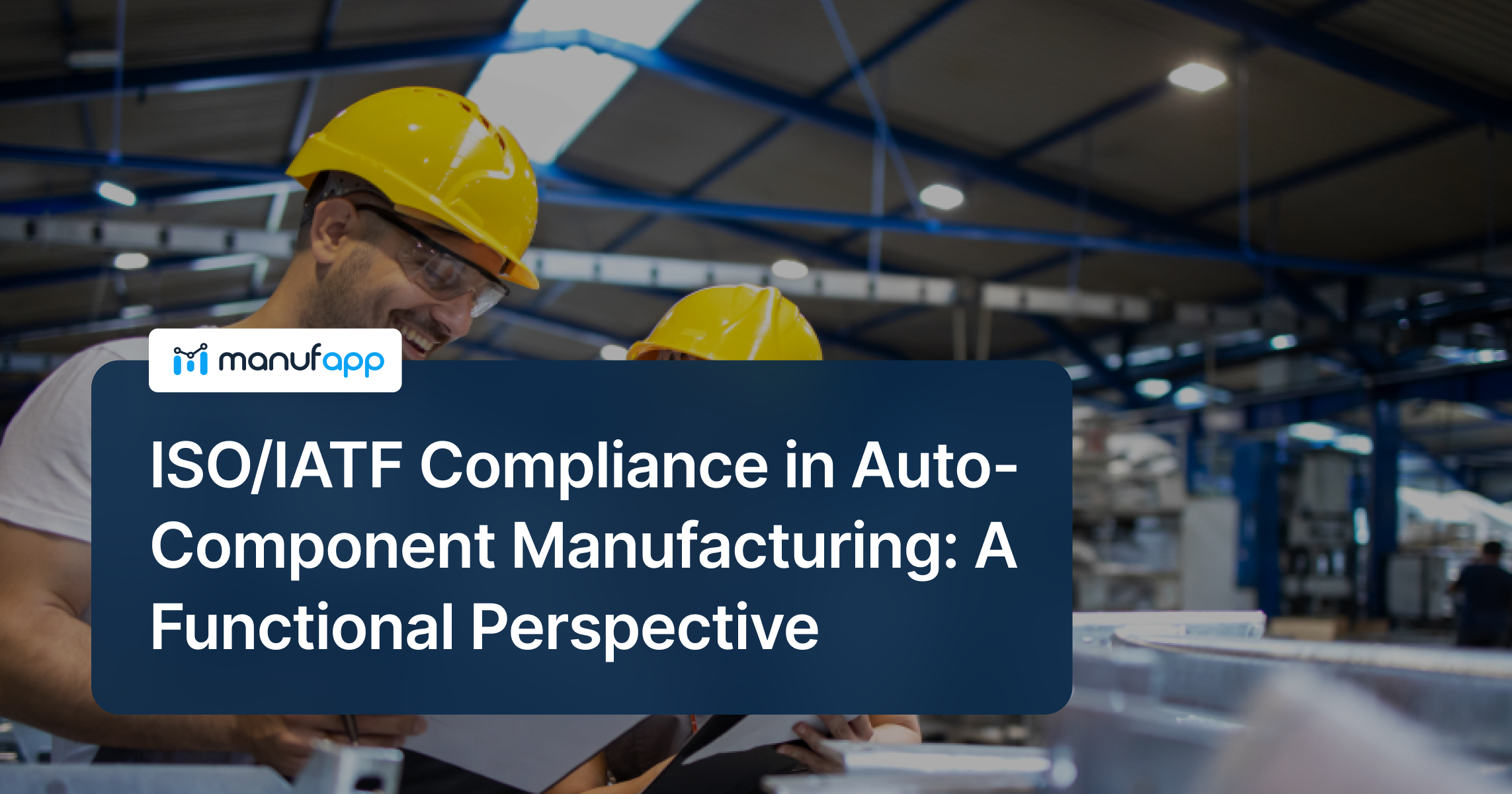In the fast-paced and dynamic world of Industrial Equipment Manufacturing, the efficient management of production processes is vital for maintaining a competitive edge and meeting customer demands. Production management software or Production Management Application Software has emerged as a transformative solution, revolutionizing how manufacturers plan, execute, and optimize their production workflows. This comprehensive and innovative software empowers industrial equipment manufacturers with real-time insights, streamlined operations, and enhanced collaboration across departments. From optimizing resource allocation to ensuring strict quality control, production management software has become the cornerstone of modern manufacturing, enabling companies to achieve higher efficiency, reduced downtime, and improved overall productivity. In this article, we delve into the pivotal role of production management software in Industrial Equipment Manufacturing exploring its key features, benefits, and its potential to propel manufacturers towards greater success and excellence.
Manufacturing process in Industrial Equipment Manufacturing
In the realm of Industrial Equipment Manufacturing, the manufacturing process represents the intricate journey from concept to creation, where raw materials are meticulously transformed into advanced machinery and tools.
Below is a brief information about how the manufacturing is followed in this Industry.
- Design and Engineering:
- Product specifications and requirements are defined.
- Detailed design and engineering plans are created.
- Prototyping and virtual simulations may be performed.
- Material Sourcing:
- Raw materials, such as metals, plastics, and electronic components, are sourced from suppliers.
- Quality of materials is verified to meet industry standards.
- Fabrication:
- Various fabrication techniques are employed, including machining, welding, casting, and forging.
- CNC machines and automated processes may be used for precision and efficiency.
- Parts and components are manufactured according to design specifications.
- Assembly:
- Components are brought together for final assembly.
- Specialized tools and techniques are used to assemble complex equipment.
- Attention is given to fit, alignment, and quality of connections.
- Quality Control and Testing:
- Rigorous quality control checks are conducted throughout the process.
- Non-destructive testing and inspection methods are employed.
- Testing may include performance evaluation, stress testing, and safety assessments.
- Finishing and Surface Treatment:
- Surface treatment processes like painting, coating, or plating are applied.
- Finishing touches, branding, and labeling are added to the equipment.
- Packaging and Shipping:
- Final products are carefully packaged for safe transport and delivery.
- Compliance with shipping regulations and safety standards is ensured.
- Installation and Support:
- In some cases, the manufacturing company may provide installation and support services for their equipment.
- Technical documentation and user manuals are provided to end-users.
- Continuous Improvement:
- Feedback from users and field performance data are collected for continuous improvement.
- Manufacturing processes are evaluated and refined for enhanced efficiency and quality.
The manufacturing process in Industrial Equipment Manufacturing demands precision, quality control, and adherence to industry standards to deliver reliable, high-performance equipment for industrial use.
Challenges faced by the Industrial Equipment Industry
In the fast-paced world of the Industrial Equipment Industry, the absence of production management software or Production Management Application poses significant hurdles that impact the smooth functioning of manufacturing processes. Without the aid of advanced software solutions, manufacturers face a multitude of challenges that can lead to inefficiencies, missed opportunities, and increased operational costs. From manual planning and scheduling complexities to limited data insights and inadequate resource utilization, the absence of production management software leaves manufacturers grappling with critical obstacles that hinder their ability to stay competitive and responsive in a rapidly evolving market landscape.
- Manual Production Planning:
Without production management software, planning and scheduling production manually can be time-consuming and prone to errors.Limited visibility into real-time data makes it challenging to adjust production schedules efficiently.
- Inefficient Resource Utilization:
The lack of automated tracking and coordination leads to inefficient use of resources, such as machinery, labor, and materials. Idle time and production bottlenecks are common, impacting overall productivity.
- Limited Data Insights:
Manual data collection and analysis make it difficult to access timely and accurate production data. Lack of data insights hinders informed decision-making and continuous process improvement.
- Quality Control Issues:
Without proper software-based quality control mechanisms, ensuring consistent product quality becomes challenging. Quality issues may go unnoticed until after the manufacturing process, leading to rework and waste.
- Complex Inventory Management:
Managing inventory levels manually can result in overstocking or stockouts, leading to increased carrying costs or production delays. Tracking component usage and ordering materials efficiently becomes more challenging.
- Difficulty in Tracking Production Progress:
Manual tracking of production progress on the shop floor makes it challenging to identify delays or potential issues. This lack of visibility can result in missed deadlines and delayed deliveries.
- Communication and Collaboration Challenges:
Communication between different teams and departments may be fragmented, leading to miscommunication and delays. Collaborative decision-making becomes difficult without centralized data and communication channels.
- Difficulty in Scaling Operations:
Expanding production operations without production management software can be cumbersome and error-prone. Scaling up may result in increased complexities and operational inefficiencies.
- Inability to Respond to Changes:
The lack of real-time data and automated processes makes it difficult to respond quickly to changing market demands or unforeseen events. The industry’s ability to be agile and adaptive is limited.
- Increased Risk of Non-Compliance:
Manual processes raise the risk of non-compliance with industry standards and safety regulations. Without proper documentation and tracking, meeting compliance requirements becomes challenging.
- Lack of Continuous Improvement Initiatives:
Manual systems may hinder the implementation of continuous improvement initiatives like lean manufacturing or Six Sigma. The industry may struggle to optimize processes and drive efficiency without proper data analysis.
Implementing production management software can address these challenges and significantly improve the Industrial Equipment Industry’s manufacturing processes by enhancing efficiency, productivity, and decision-making capabilities.
How Production management software can help the Industrial Equipment Industry
Here are the ways in which Production management software can help the Industrial Equipment Industry in their manufacturing process:
- Efficient Planning and Scheduling:
- Generate optimized production schedules based on real-time data and resource availability.
- Minimize idle time, reduce production bottlenecks, and ensure efficient utilization of resources.
- Maintain optimal inventory levels by tracking raw materials and components in real-time.
- Avoid stockouts and overstock situations, leading to cost savings and improved production flow. To understand more on Inventory we request you to follow the link for Role of technology in improving Production and Inventory Management.
- Quality Control and Traceability:
- Implement stringent quality control measures to monitor and ensure the quality of manufactured equipment.
- Enable traceability of components and materials used, facilitating product recalls if necessary.
- Resource Optimization:
- Monitor equipment and machinery performance to identify inefficiencies and maintenance needs.
- Improve equipment uptime, minimize breakdowns, and prolong asset life with proactive maintenance.
- Real-time Data and Analytics:
- Access real-time production data and key performance indicators (KPIs) for informed decision-making.
- Identify production trends, forecast demand, and adapt to market changes promptly.
- Supply Chain Integration:
- Seamlessly integrate with suppliers and partners for smoother procurement processes.
- Enhance collaboration, reduce lead times, and improve overall supply chain efficiency.
- Workforce Management:
- Assign tasks and monitor progress to ensure optimal workforce utilization.
- Track employee performance and training requirements for skill development.
- Cost Control and Budgeting:
- Monitor production costs, including labor, materials, and overhead expenses.
- Identify cost-saving opportunities and ensure adherence to budget constraints.
- Compliance and Documentation:
- Streamline compliance with industry regulations and safety standards.
- Maintain comprehensive documentation for audits and certifications.
- Visualisation and Reporting:
- Create visual dashboards and reports for a quick overview of production performance.
- Monitor production metrics and track progress towards goals and targets.
- Lean Manufacturing Implementation:
- Facilitate the adoption of lean manufacturing principles for waste reduction and process optimization.
- Identify areas for continuous improvement and implement corrective actions.
- Real-time Collaboration and Communication:
- Enable seamless communication and collaboration among different departments and teams.
- Reduce communication gaps and improve coordination between production stages.
By leveraging Production management software, the Industrial Equipment Industry can streamline their manufacturing processes, enhance productivity, and achieve greater operational efficiency. This software becomes a valuable asset, allowing manufacturers to stay competitive and responsive to market demands while delivering high-quality equipment.
We would also like to put a light on how PMS can help the Medical Equipment Industry as well, please follow the link to read more on the topic.
The Power of Production Management Systems in Medical Equipment Sector
Strategies for Successful Implementation of Production Management Software (PMS) in the Industrial Equipment Industry
Implementing Production Management Software (PMS) in the Industrial Equipment Industry requires a well-defined strategy to ensure a smooth transition, maximize benefits, and enhance operational efficiency. Here are key points outlining PMS implementation strategies for the industry:
Needs Assessment and Goal Definition:
Conduct a thorough assessment of existing production processes and identify pain points and areas for improvement. Define clear goals for the PMS implementation, such as increasing production efficiency, reducing downtime, or improving quality control.
Cross-Functional Collaboration:
Form a cross-functional implementation team involving representatives from production, IT, operations, and other relevant departments. Foster collaboration and ensure alignment of goals and expectations throughout the implementation process.
Vendor Selection and Customization:
Research and select a PMS solution that aligns with the specific needs and processes of the Industrial Equipment Industry. Prioritize solutions that offer customization options to tailor the software to industry-specific requirements.
Data Integration and Migration:
Develop a comprehensive plan for integrating data from existing systems, such as ERP and MES, into the PMS. Ensure a seamless transfer of historical production data to maintain continuity.
Pilot Implementation:
Begin with a pilot implementation in a specific production area or line to test the PMS’s functionality and performance. Gather feedback, address issues, and fine-tune the system before full-scale deployment.
Change Management and Training:
Develop a change management strategy to prepare the workforce for the PMS implementation. Provide comprehensive training to employees at all levels to ensure effective adoption and utilization.
Phased Implementation Approach:
Divide the PMS implementation into phases to manage complexity and minimize disruptions. Gradually roll out the system across different production areas or facilities while continuously assessing progress.
Real-time Monitoring and KPIs:
Implement real-time monitoring of key performance indicators (KPIs) to track the impact of the PMS on production processes. Continuously analyze data to measure improvements and identify areas for optimization.
Continuous Improvement Initiatives:
Foster a culture of continuous improvement by regularly reviewing PMS performance and identifying opportunities for optimization. Use feedback from users and data analysis to refine processes and enhance system capabilities.
Maintenance and Support Plan:
Develop a robust maintenance and support plan in collaboration with the software vendor. Ensure ongoing technical assistance, updates, and troubleshooting to address any issues that may arise.
Scalability for Future Growth:
Choose a PMS solution that is scalable and can accommodate future expansion and growth of the Industrial Equipment Industry. Plan for the addition of new production lines, facilities, or product offerings as the business evolves.
Integration with IoT and Industry 4.0:
Leverage the capabilities of IoT and Industry 4.0 by integrating sensors and data analytics into the PMS. Enhance predictive maintenance, real-time monitoring, and decision-making through data-driven insights.
By following a comprehensive PMS implementation strategy, the Industrial Equipment Industry can optimize production processes, enhance visibility, and achieve higher levels of operational excellence and competitiveness.
Summary
Implementing production management software in your business can revolutionize your operations and streamline your processes. With features like real-time data tracking, inventory management, workflow automation, and resource allocation, production management software allows you to optimize productivity, reduce costs, and improve overall efficiency. It also helps in minimizing human errors and enables better collaboration among teams. Whether you are in the manufacturing industry or any other sector that involves production, investing in the right production management software is crucial for staying competitive and meeting customer demands. So, take the leap and explore the various options available to find the perfect fit for your business needs. Start streamlining your production today and witness the positive impact it has on your bottom line.





